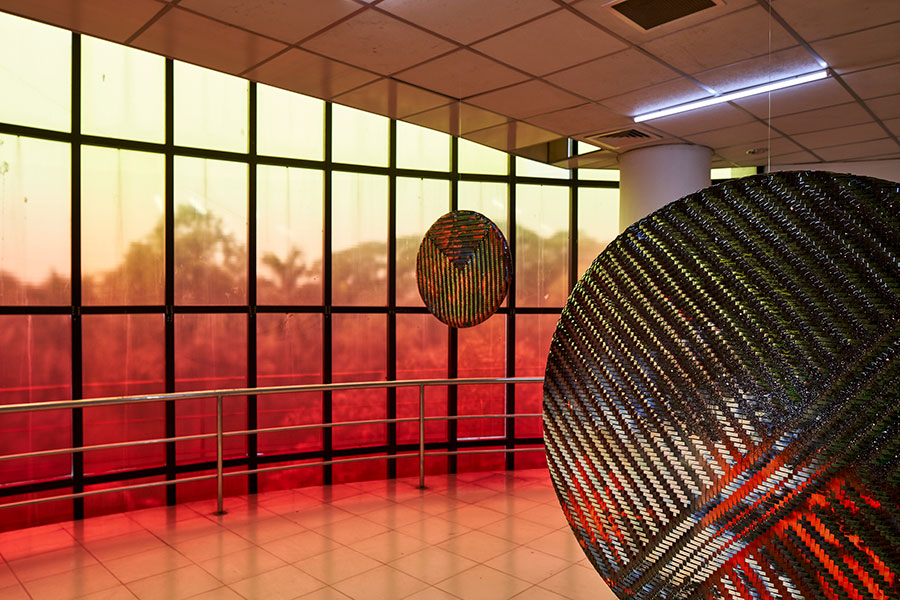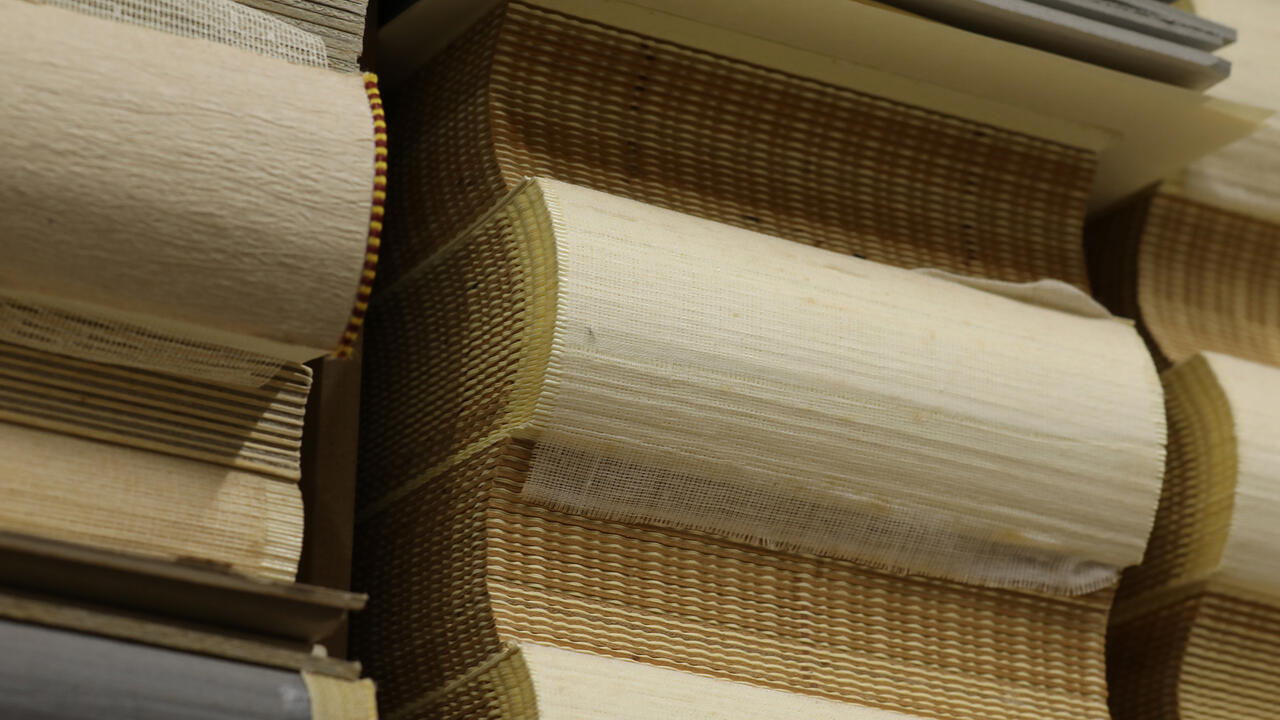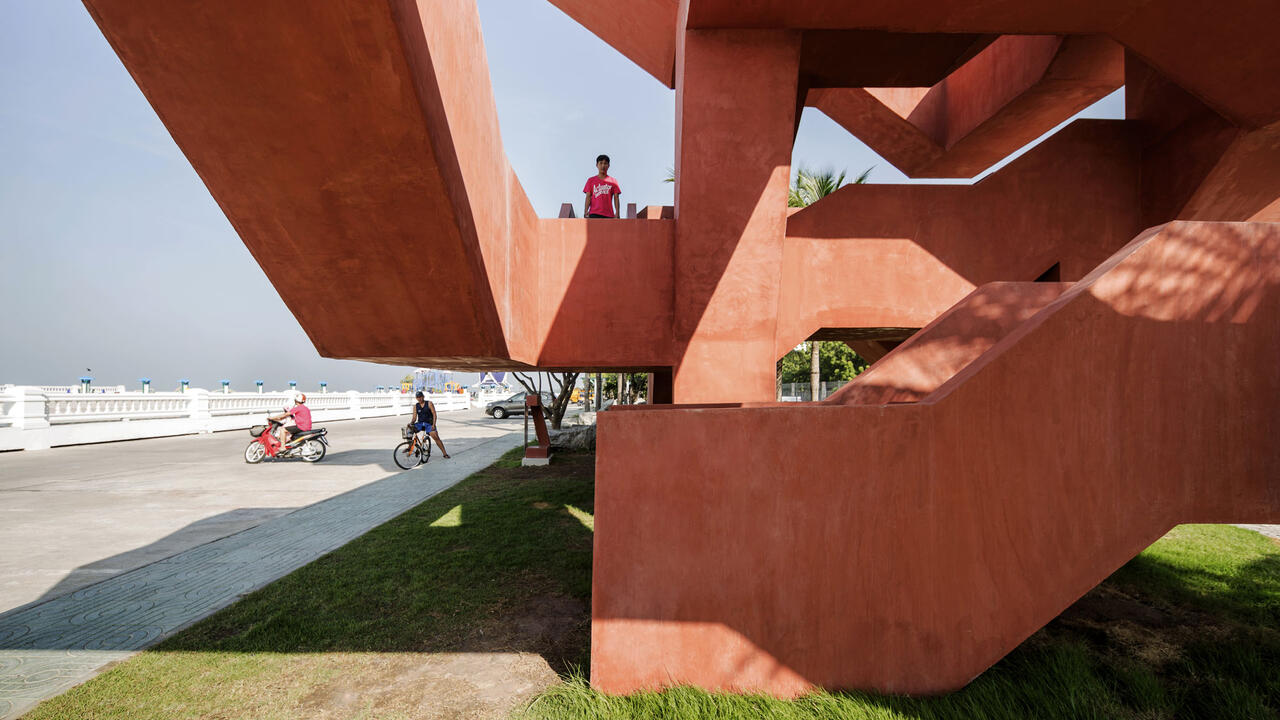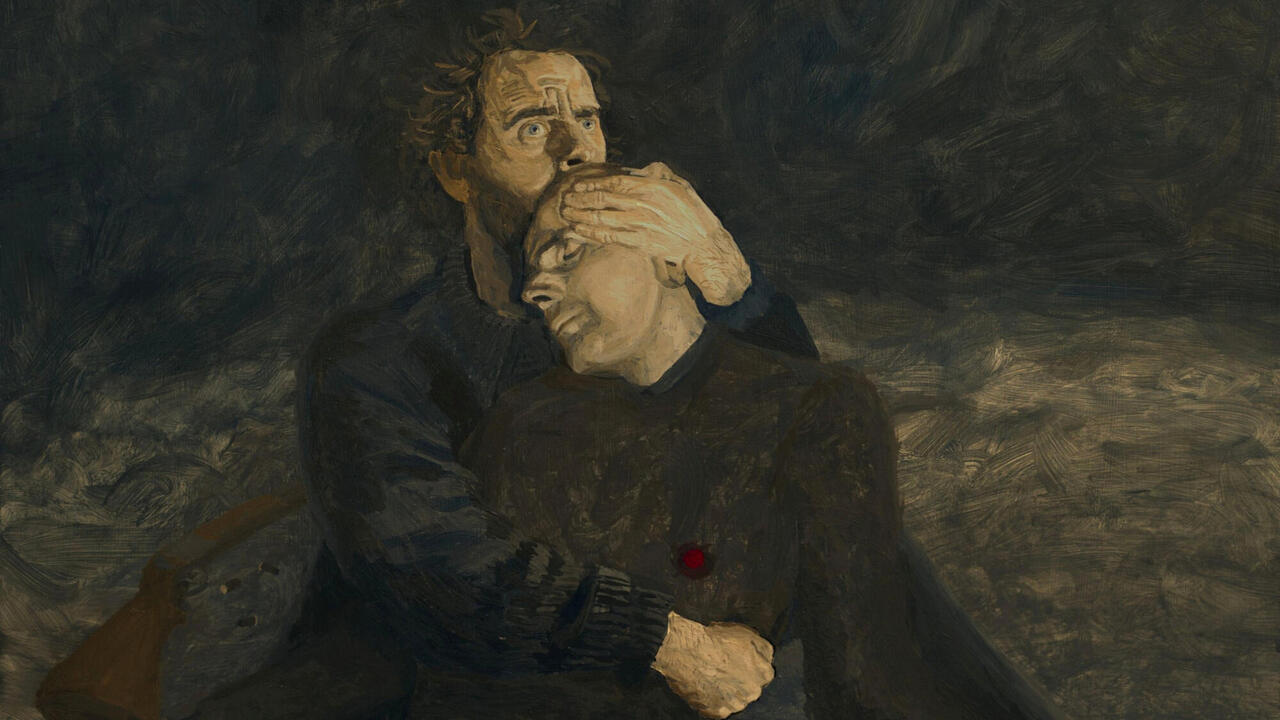How Do We Look Backward to Move Forward? Notes from the 2020 Dhaka Art Summit
The traditional and the technological combine to offer visions of our uncertain future
The traditional and the technological combine to offer visions of our uncertain future

A clockwork, headless Superman figurine crawls on his front, an automatic rifle angled in his arms. Under him is a collage of cut-up, painted-over images from American magazines (National Geographic, Time). Bangladeshi artist Marzia Farhana’s Sovereignty to Nature (2019–20) – a sculpture with three accompanying paintings – gives us the wreckage of American imperialism: a Mad Max-style postindustrial ruin, flooded with grey smoggy skies, dead fish and wide-eyed wild cats. A more reparative reading is to be found in her inclusion of intersectional feminist struggles: within the collage are images documenting the Chipko Movement in 1970s India, where indigenous women successfully mobilized against deforestation.
Farhana’s work is part of Social Movements and Feminist Futures, one of nine chapters that make up this year’s Dhaka Art Summit (DAS), conceived by artistic director Diana Campbell Betancourt and curated in collaboration with more than 31 organizations and individuals. Taking place at Shilpakala Academy, Seismic Movements – as the overall summit is titled – looks at the forces that split things apart or pull them together, and considers how past, present and future form an inextricable continuum. The exhibition is full of critique, especially of patriarchal capitalism and how it reenacts colonial tendencies. The antidote, DAS 2020 proposes, is to be found in feminist, futurist visions.

A white cut-paper work by American artist Ellen Gallagher – part of her ‘Watery Ecstatic’ series (2017) – animates the myth of Drexciya, an Afrofuturist legend created by the eponymous 1990s Detroit electro duo. It’s an underwater world of people with webbed feet and gills, the children of pregnant African slaves thrown overboard while crossing the Atlantic. Gallagher carves hybrid marine and human life forms, which, according to the myth, travel straight from the ocean floor to the cosmos – exploding into the full brightness of the Drexciya star. Gallagher unites the nightmares of history with ecstatic utopias, carefully balancing the terrifying and the sublime in a way that echoes Farhana’s work as well as several other pieces here.
The section Collective Movements brings together artworks and programmes by artist and activist collectives. The most striking of these is a bilingual newspaper made in collaboration between the Invisible Borders Trans-African Photographers Organisation, from Lagos, and Pathshala, the celebrated Dhaka photography school. A group of artists, writers and photographers travelled to Bangladesh’s border towns, documenting their journeys through what the paper’s editorial describes as: ‘Barbed wires. High fences. Border walls. Security Cameras. Uniformed officers.’ As writer Kay Ugwuede elegantly puts it on the front page, ‘It is at the centre of this history that we try each other on like new clothes.’

Many of the works here foreground empathy as a means through which to find the points at which different histories meet and interact. ‘I Am M(in)e’, a series of bejeweled portraits by Detroit-based Chamorro artist Gisela McDaniel, depicts Native American and mixed-race womxn from the US’s former as well as current Pacific territories. The portraits talk back to their viewers: an audio piece, which collates extracts from McDaniel’s conversations with her subjects, rings over the scene. As they speak, a critique of the continuing American colonization of the Pacific islands becomes clear.
What feels particularly special to this edition of the summit is the strong showing of work by Bangladeshi artists. Munem Wasif navigates the difficulty of depicting the nuances of the Rohingya refugee camps he has been visiting since 2009. Feeling unable to make portraits, he instead photographs objects people have brought over or made while in the camps, staging them against monochromatic backgrounds. The resulting project, Spring Song (2016–ongoing), is a collection of the fragments that make up life in the camps; there is only one image of a person – a passport-sized photo, mounted on navy blue card. Wasif’s rejection of cliché is refreshing. As with McDaniel’s intimately narrated portraits, the work relies on networks of relationships and community to come alive.

The site-specific installation Love Letter to the Last Sun (2019–20), by Dhaka-based artist Mizanur Rahman Chowdhury, bursts in several directions at once, juxtaposing objects from mirrors to plants to chunks of coal and exercise equipment. The work is full of small narratives. There is nothing natural to be found here, rather, the gathered objects imitate the poetics of nature: the slippery reflection of water on a wall; a fake fireplace where an orange-hued cloth flickers instead of a flame; a fan blowing over a piece of foil in an endless crackling wave. Chowdhury assembles a dystopia full of unexpected beauty.
The film programme, curated by the Otolith Group, included Voices of the Gods (1985), directed by Alfred Santana, which looks at the practice of Akan and Yoruba (West African religions) spirituality in 1980s America. In it, an Akan priestess – and doctor of Western medicine – explains how, when diagnosing her patients, she also consults the relevant deities for advice on treatment. DAS 2020 is full of such syncretism of the traditional and technological: a show that suggests how to navigate the apocalyptic present with hope, aided by ancient knowledge systems.
Main image: The Otolith Group, O Horizon, 2018, film still. Courtesy: the artist, Dhaka Art Summit and Samdani Art Foundation; photograph: Randhir Singh






















